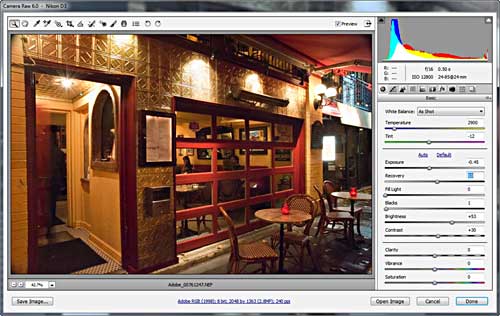ADOBE RELEASES CAMERA RAW 5.6 AND LIGHTROOM 2.6 GM VERSIONS


I thought you would like to know that Adobe today announced the immediate availability of Lightroom 2.6, Photoshop Camera Raw 5.6 and DNG Converter 5.6 on Adobe.com. Originally posted as release candidates for community testing on Adobe Labs, these final versions include raw file support for 20 new popular camera models, including the Canon EOS 7D and Nikon D3s. Additional DNG support has been added for the Leica M9 and Ricoh GXR camera models. A full list of the newly supported cameras is below.The updates also provide a fix for an issue affecting PowerPC customers using the final Lightroom 2.5 and Camera Raw 5.5 updates on the Mac. The issue, introduced in the demosaic change to address sensors with unequal green response, has the potential to create artifacts in the highlight area while using the Highlight Recovery tool in raw files from Sony, Olympus, Panasonic and various medium format digital camera backs.Adobe would like to thank everyone who downloaded and provided feedback on the Lightroom 2.6 and Camera Raw 5.6 Release Candidates. Lightroom 2 software is today’s digital photography workflow solution, allowing photographers to quickly import, process, manage and showcase images, and the Photoshop Camera Raw plug-in provides fast and easy access within Photoshop to the raw image formats produced by many leading digital cameras. Adobe’s Digital Negative (DNG) format is a publicly available archival format for the raw files generated by digital cameras.Pricing and AvailabilityLightroom 2.6 is available as a free download for existing Lightroom 2 customers, and Photoshop Camera Raw 5.6 is available as a free download for existing customers of Photoshop CS4, Photoshop Elements 8 (Win/Mac) and Premiere Elements 8. DNG Converter 5.6 is also available as a free download for all customers. Click here for more information and to download the updates: www.adobe.com/downloads/updates.Newly Supported Camera ModelsCanon EOS 1D Mark IVCanon EOS 7DCanon PowerShot G11Canon PowerShot S90Leaf Aptus II 5Mamiya DM22, DM28, DM33, DM56, M18, M22, M31Nikon D3sOlympus E-P2Pentax K-xPanasonic FZ38Sigma DP1sSony A500Sony A550Sony A850
Adobe today announced the immediate availability of Lightroom 2.6, Photoshop Camera Raw 5.6 and DNG Converter 5.6 on Adobe.com. Originally posted as release candidates for community testing on Adobe Labs, these final versions include raw file support for 20 new popular camera models, including the Canon EOS 7D and Nikon D3s. Additional DNG support has been added for the Leica M9 and Ricoh GXR camera models. A full list of the newly supported cameras is below.
The updates also provide a fix for an issue affecting PowerPC customers using the final Lightroom 2.5 and Camera Raw 5.5 updates on the Mac. The issue, introduced in the demosaic change to address sensors with unequal green response, has the potential to create artifacts in the highlight area while using the Highlight Recovery tool in raw files from Sony, Olympus, Panasonic and various medium format digital camera backs.
Adobe would like to thank everyone who downloaded and provided feedback on the Lightroom 2.6 and Camera Raw 5.6 Release Candidates. Lightroom 2 software is today’s digital photography workflow solution, allowing photographers to quickly import, process, manage and showcase images, and the Photoshop Camera Raw plug-in provides fast and easy access within Photoshop to the raw image formats produced by many leading digital cameras. Adobe’s Digital Negative (DNG) format is a publicly available archival format for the raw files generated by digital cameras.
Pricing and Availability
Lightroom 2.6 is available as a free download for existing Lightroom 2 customers, and Photoshop Camera Raw 5.6 is available as a free download for existing customers of Photoshop CS4, Photoshop Elements 8 (Win/Mac) and Premiere Elements 8. DNG Converter 5.6 is also available as a free download for all customers. Click here for more information and to download the updates: www.adobe.com/downloads/updates.
Newly Supported Camera Models
Canon EOS 1D Mark IV
Canon EOS 7D
Canon PowerShot G11
Canon PowerShot S90
Leaf Aptus II 5
Mamiya DM22, DM28, DM33, DM56, M18, M22, M31
Nikon D3s
Olympus E-P2
Pentax K-x
Panasonic FZ38
Sigma DP1s
Sony A500
Sony A550
Sony A850
















































